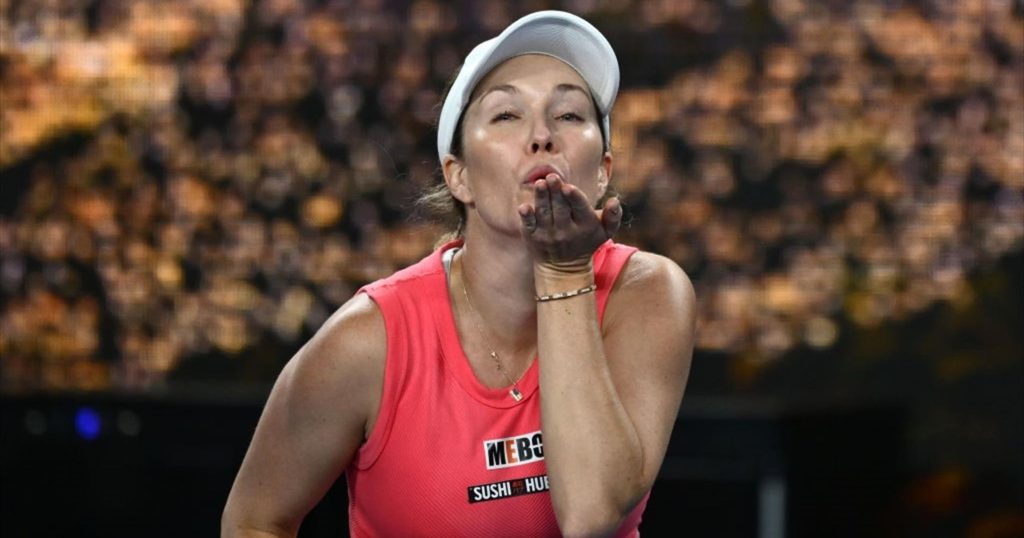The atmosphere at the Australian Open crackled with unexpected tension as American tennis player Danielle Collins found herself on the receiving end of a chorus of boos following her second-round victory. Her exuberant celebration, perceived by many in the home crowd as provocative and disrespectful, ignited a controversy that quickly overshadowed her on-court achievement. Collins, known for her fiery on-court persona and aggressive playing style, defeated a local favorite, further fueling the negative reaction from the Australian spectators. While some defended her right to express her joy and competitive spirit, others viewed her actions as unnecessarily antagonistic, contributing to a simmering debate about sportsmanship, crowd etiquette, and the delicate balance between celebrating victory and respecting one’s opponents and their supporters. The incident highlighted the complex dynamics between players and fans, particularly in the high-stakes environment of a Grand Slam tournament.
The specific nature of Collins’ celebration remains a point of contention. Some accounts suggest it involved excessive fist-pumping, shouting, and gestures directed towards the crowd, interpreted as taunting. Others argue that her reactions were simply a natural outpouring of emotion after a hard-fought victory, amplified by the pressure-cooker environment of a major tournament. Without clear video evidence readily available, the interpretation of her actions remains subjective, further fueling the polarized opinions surrounding the incident. Regardless of intention, the negative reaction from the crowd underscores the cultural nuances and expectations surrounding celebrations in professional sports, particularly within the passionate and often partisan atmosphere of the Australian Open. The incident served as a reminder that even seemingly innocuous actions can be misinterpreted and amplified within the emotionally charged arena of competitive sports.
The booing directed at Collins sparked widespread discussion about the role of the crowd in tennis and the acceptable boundaries of player celebrations. While cheering for one’s favorite player is an integral part of the spectator experience, the line between enthusiastic support and disrespectful behavior can become blurred, particularly when national pride and home-court advantage are at stake. Some argued that the Australian crowd overreacted, suggesting that Collins’ celebration, while perhaps exuberant, did not warrant such a negative response. Others maintained that her actions were deliberately provocative and disrespectful towards the home crowd, justifying the boos as a legitimate expression of disapproval. The incident raised questions about the responsibility of both players and spectators to maintain a respectful and sportsmanlike environment, even amidst the intense pressure and emotional swings of a Grand Slam tournament.
The controversy surrounding Collins’ celebration also touched on broader issues of cultural differences and varying expectations regarding sportsmanship. What might be considered an acceptable display of emotion in one culture could be perceived as disrespectful or arrogant in another. The international nature of tennis, with players and fans from diverse backgrounds, adds another layer of complexity to these interpretations. Some commentators suggested that the Australian crowd, known for its passionate support of local players, might have been particularly sensitive to Collins’ perceived showboating. Others argued that her actions, regardless of cultural context, crossed the line of acceptable behavior and merited the negative response. The incident highlighted the need for greater cross-cultural understanding and sensitivity within the global tennis community.
The aftermath of the booing incident saw Collins address the issue in post-match interviews, attempting to clarify her intentions and defend her actions. She maintained that her celebration was not meant to be disrespectful and attributed it to the adrenaline and excitement of winning a tough match. While some accepted her explanation, others remained unconvinced, arguing that her actions spoke louder than her words. The incident underscored the challenges athletes face in navigating the often-volatile relationship with the crowd, particularly in the high-pressure environment of professional sports. Collins’ experience served as a reminder that even seemingly innocuous actions can be misinterpreted and amplified, leading to unintended consequences and public scrutiny.
Ultimately, the controversy surrounding Danielle Collins’ celebration at the Australian Open served as a microcosm of the complex dynamics between players, fans, and the media in the world of professional tennis. It highlighted the challenges athletes face in balancing their competitive drive and emotional expression with the expectations of sportsmanship and respect for opponents and fans. The incident sparked a broader conversation about crowd etiquette, cultural differences, and the evolving definition of acceptable behavior in professional sports. While opinions remained divided on the appropriateness of Collins’ celebration and the subsequent booing, the incident underscored the importance of ongoing dialogue and reflection on these issues within the tennis community and beyond. It served as a reminder that the lines between celebration, gamesmanship, and disrespect can often be blurred, and that navigating these complexities requires sensitivity, understanding, and a commitment to maintaining a positive and sportsmanlike environment for all involved.














